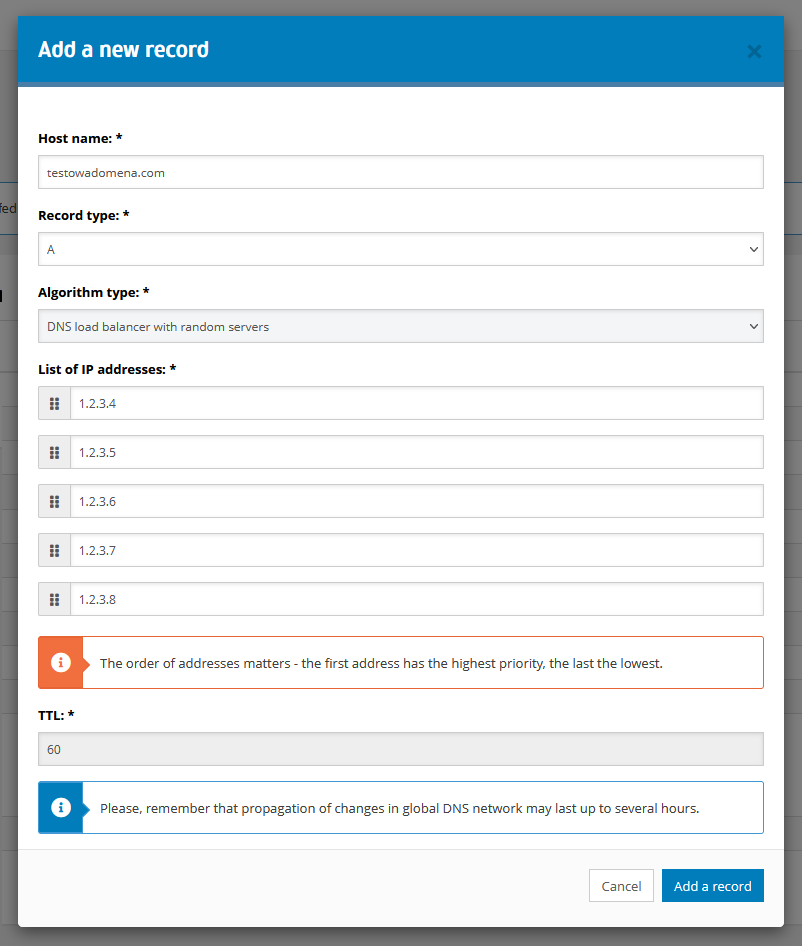DNS load balancer and DNS failover
To maintain high availability of services, it’s beneficial to implement load balancer and failover mechanisms. In the
e24cloud, the simplest way is to deploy a DNS-level load balancer.
DNS-level Load Balancer is responsible for evenly distributing traffic among servers.
DNS-level Failover ensures redirecting traffic from a server that has encountered a failure to another functioning
server.
Both of these functionalities combined into a convenient mechanism can be activated using the Client Panel. To do this, go to the Resources > DNS Management tab in the Client Panel, and then click on the edit button next to the domain for which you want to enable this service.
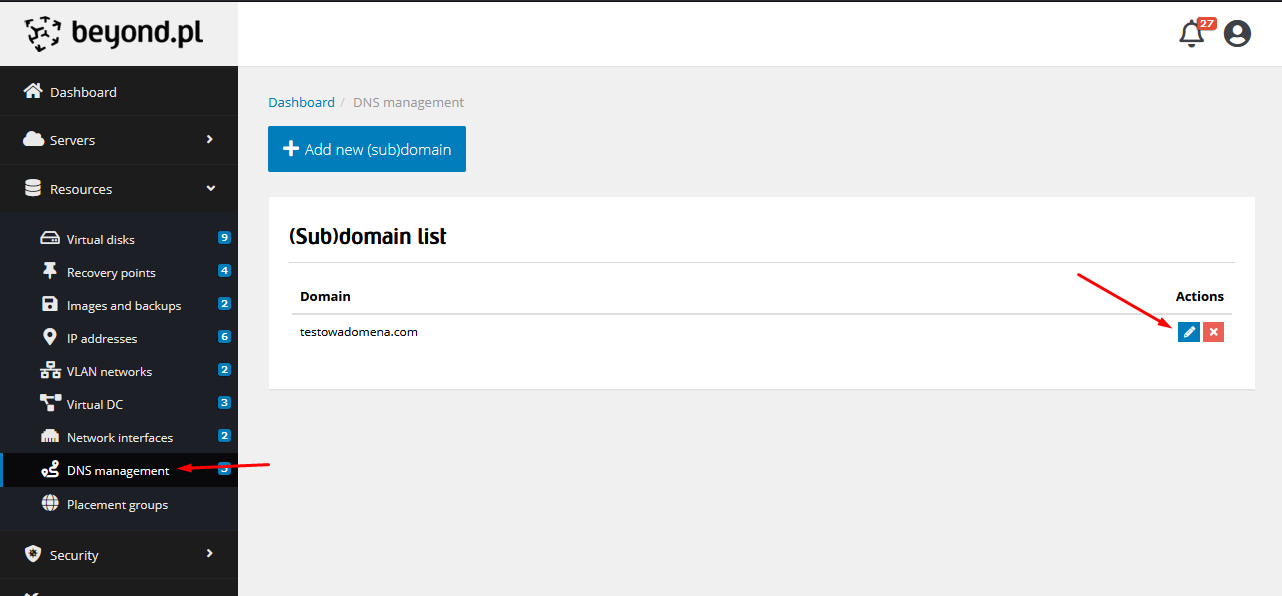
Next, click the Add New Record button.
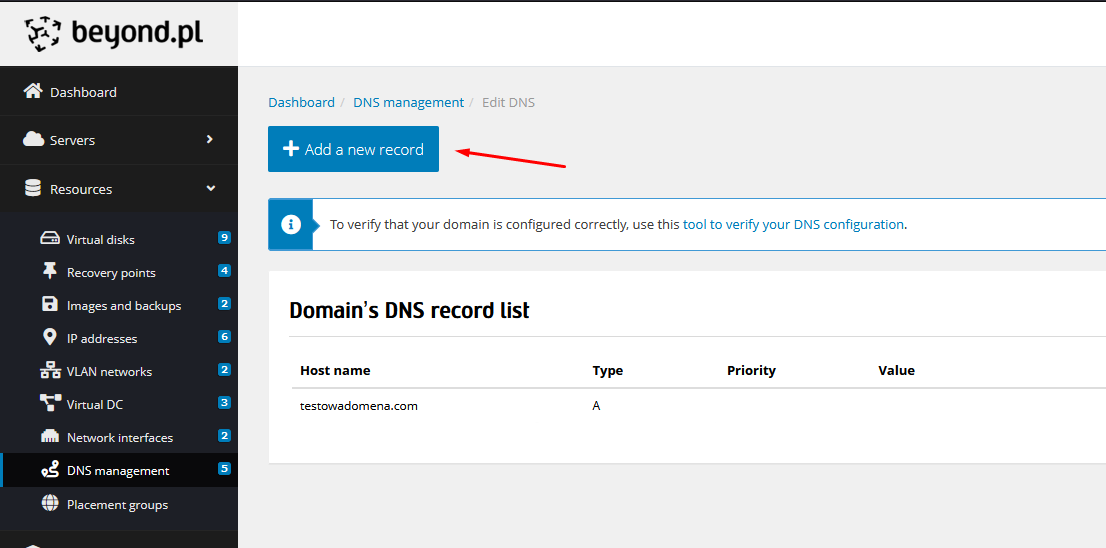
In the form, provide the (sub)domain for which you want to enable DNS load balancing and failover, and then choose the algorithm type of operation. There are 4 types available:
- Standard Record - simply a regular A record,
- DNS Load Balancer with Specified Port - in this case, the load balancer/failover mechanism will query the specified IP addresses on the port defined by us every 60 seconds,
- DNS Load Balancer with Specified URL - in this case, the load balancer/failover mechanism will query the specified IP addresses with the defined URL path every 60 seconds,
- DNS Load Balancer with Random Servers - in this case, the load balancer/failover mechanism will indicate consecutive servers (based on the round-robin algorithm) from the list specified in the form.
When providing IP addresses for servers covered by the DNS load balancer/failover service, remember that the order matters - the first IP address on the list has the highest priority, and the last has the lowest.
For example, a load balancer/failover defined for a sample domain with a specified port for 5 servers looks like this:
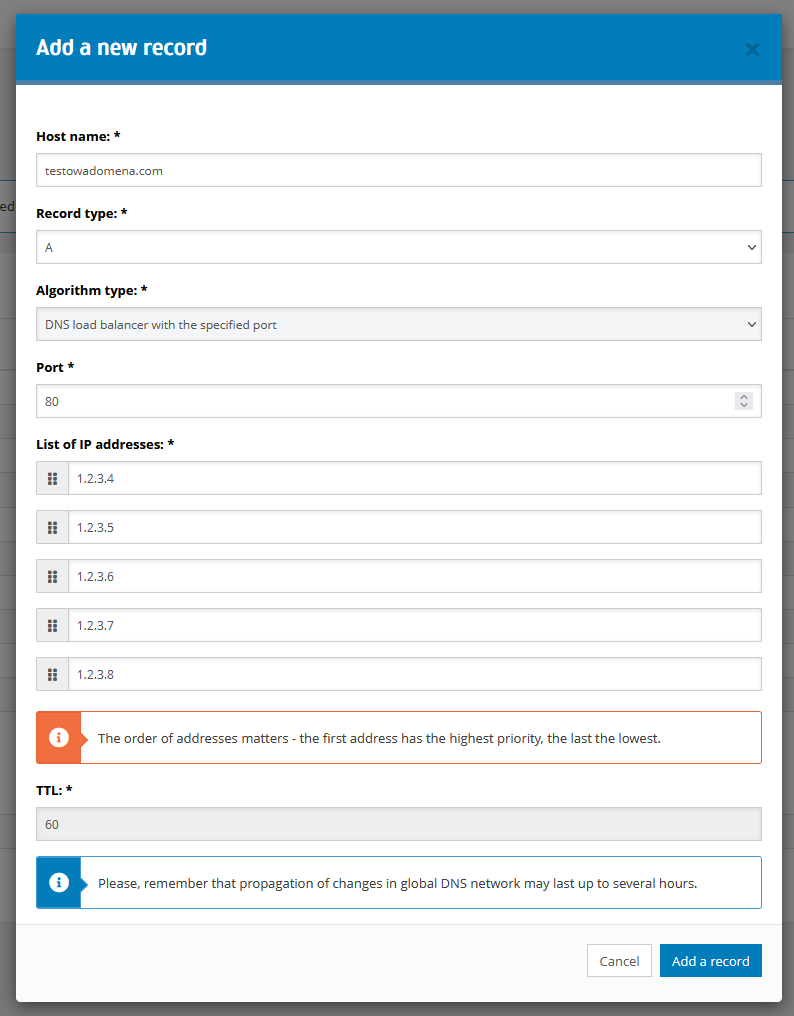
For example, a load balancer/failover defined for a sample domain with a specified URL for 5 servers looks like this:
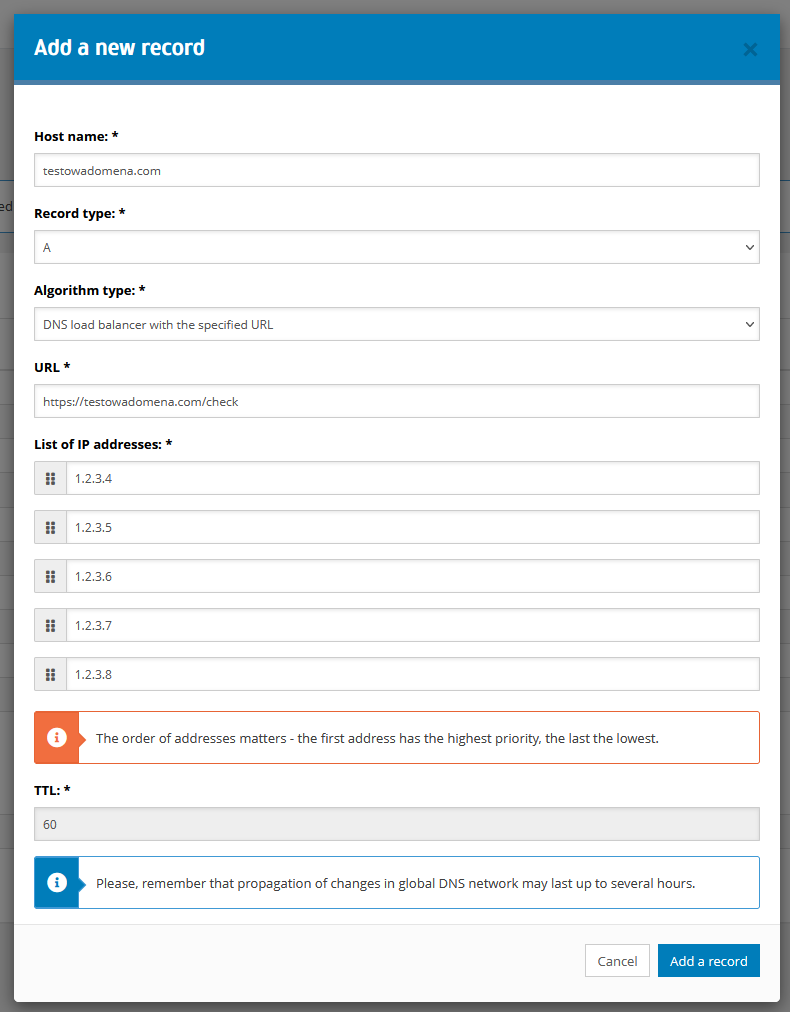
For example, a load balancer/failover defined for 5 servers selected based on the round-robin algorithm looks like this:
